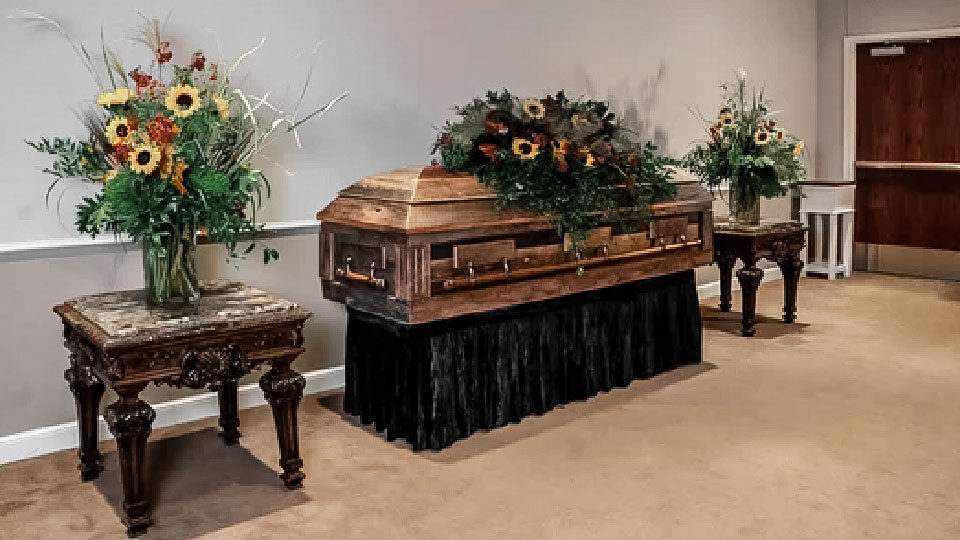An Exclusive Signature Service of
Lake Ridge Chapel and Memorial Designers:

Integrity | Standards | Reliability | Trust | ValuesOur 10-step Cremation Process |
Say yes to our reliable and high-quality cremation services.
At Lake Ridge, we understand our neighbors’ need to find a trustworthy cremation provider. We are the only firm in Lubbock with a crematory inside our funeral home. This unique feature lets us ensure your loved one never leaves our care. We guarantee a thorough and professional cremation process every time, so your family will feel at peace about your loved one’s final disposition. We practice ultimate transparency and encourage families to stop by our funeral home for an in-person tour of our state-of-the-art crematory.





5. Checks and balances: A cremation specialist and a staff member will review all cremation paperwork and permits. This is to ensure authorizations and permits have been received and properly documented. Once verified, both staff members must sign the cremation order before starting the cremation process. Your loved one is taken to the cremation chamber, and their personal identification is put in our digital cremation system prior to the cremation process. The name of the individual, date and time of the cremation, identification number, and crematory operator's name are entered. Our digital cremation system is dated and the start time is noted and signed by a cremation specialist before and after the cremation.


7. Details during the cremation: The crematory checklist, the barcode, and the tag, are placed on the outside of the cremation chamber during the cremation process all under constant video surveillance to preserve the identity of your loved one.
.jpg?width=2000&height=1124&name=JenniferPreneedShoot%20(1%20of%2010).jpg)

9. Return of the cremated remains: Our staff will notify you to schedule a time for receipt of the cremated remains. At this time we will provide a dignified setting, in which to receive the urn, where you may spend a few moments, privately, in quiet reflection.


Considerations for Cremation in Lubbock County
In Lubbock County, a variety of respectful interment choices are available for those who have chosen cremation. From Urn Vaults to dedicated niches, there are numerous ways to memorialize loved ones in a manner that reflects their personal values and family traditions.

The Importance of Closure
The experienced staff at Lake Ridge Chapel firmly believes that cremation families deserve the same opportunities that burial families have always been granted. To bridge this gap, a viewing prior to cremation is a vitally important standard practice, offering the family a private time to say their final goodbyes while providing the peace of mind that a "positive identification" of the loved one can bring. It has been our experience that this form of closure is worth its weight in gold.


Is cremation more economical than burial? Cremation, like burial, is simply a preference of disposition. Disposition means the manner in which human remains are finally handled. Any price differences would be related to the type of memorial services held, and merchandise purchased, and the like. Even these monetary differences between burial and cremation services are minimal.
How long does the cremation process take? The cremation process itself is completed anywhere between 3 1/2 and 5 hours. The authorization and paperwork processes add additional time. Most cremations can be completed within 3 to 5 days.


Who is considered next-of-kin? Because each situation is unique, we suggest consulting a funeral professional when attempting to establish "legal next-of-kin" and who has or will have the legal Right of Disposition. However, next-of-kin, by law, states that legal next-of-kin proceeds in the following order: spouse, children (all share this equally no matter their age), parents, siblings, grandchildren, and on to nieces and nephews.


What happens to any jewelry worn by the deceased? Jewelry or other similar items may be placed on the deceased for viewing purposes but should be returned to the family prior to cremation or placed in the urn immediately before cremation. Metal items are melted down during the cremation process and cannot be recovered.


Is cremation an accepted form of disposition within the Catholic Religion? Yes. However, according to church doctrine, the cremated remains must then be buried in order to fulfill the wishes of the church. The church does prefer that the body be present at the mass and then cremated once services are concluded. However, if this is not feasible for economic or circumstantial reasons, then they request that the urn containing the cremated remains be present. Other religious groups such as Orthodox Jews and Muslims forbid the cremation practice.









